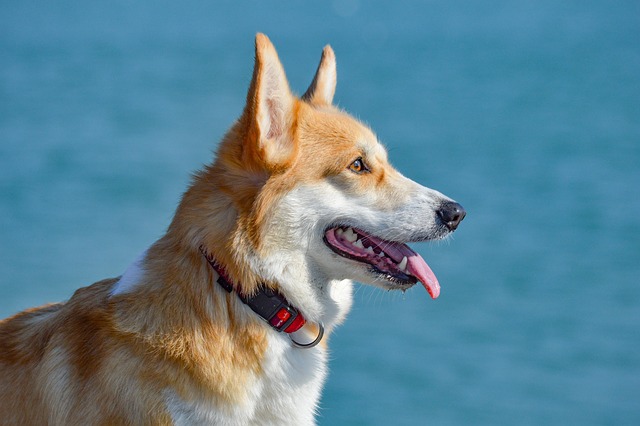
How can I tell if my dog's heatstroke is serious
Let’s be real: It’s a sticky August morning in Los Angeles, and you took your 2-year-old Golden Retriever, Max, for a walk a little later than usual
I sat with my friend Clara last summer as her 4-year-old Labrador, Cooper, lay listlessly on her apartment floor—three days after he’d suffered heat stroke at a park picnic. “He’s still not eating much and won’t play fetch,” she said, brushing his ears. “When will he be back to normal?” If you’re a new U.S. dog owner whose pup has survived heat stroke, this question weighs heavy. The truth is, how long a dog takes to fully recover depends on three key factors: the severity of the heat stroke, how quickly you acted, and your dog’s overall health—recovery can range from 1–3 days for mild cases to weeks (or longer) for severe ones, with no one-size-fits-all timeline.
To understand why recovery times vary, start with how heat stroke damages the body. Dogs cool down by panting, but when their temperature spikes above 103°F, organs like the brain, kidneys, and liver start to overheat. Mild heat stroke (temp 103–104°F, symptoms: heavy panting, lethargy) rarely causes organ damage, so recovery is fast. Moderate cases (temp 104–106°F, symptoms: vomiting, weakness) may irritate organs, adding a few days to recovery. Severe heat stroke (temp over 106°F, symptoms: seizures, collapse) often leads to lasting organ stress—Cooper’s temp hit 105.5°F, and his vet found mild kidney inflammation, which extended his recovery to two weeks. Puppies, seniors, or dogs with pre-existing conditions (like heart disease) also take longer to bounce back, as their bodies are less resilient.

Here’s how to support your dog through recovery, based on timeline: First 1–3 days (critical phase): Follow your vet’s orders—Cooper got subcutaneous fluid injections to rehydrate and anti-nausea meds for his upset stomach. Keep them in a cool room (70–72°F) with fans or AC; avoid any play or walks. Offer small, bland meals (boiled chicken and rice) to ease digestion. Days 4–7 (recovery phase): If they’re eating and drinking normally, start short, slow walks (5 minutes, early morning) but skip parks or stairs. Watch for red flags: excessive panting, vomiting, or lethargy—these mean you’re pushing too fast. Weeks 2–4 (full recovery): Gradually increase activity (add 5 minutes to walks weekly) and return to their regular diet. Cooper started playing fetch again at 10 days, but his vet warned against intense exercise for a full month. Always attend follow-up vet visits—blood tests check for hidden organ damage that might delay recovery.
Culturally, never scold your dog for being “slow” to recover—they’re healing, and punishment violates U.S. animal welfare standards. Instead, reward small wins (like finishing a meal) with gentle praise. For apartment living, use blackout curtains to keep rooms cool and avoid leaving your dog alone on hot days (many U.S. cities ban leaving pets in parked cars, with fines up to $500 in Colorado). When walking during recovery, carry a portable water bowl and extra poop bags (cities like Dallas fine $200 for leaving messes), and stick to shaded routes. If your area issues heat advisories, skip walks entirely—indoor puzzle toys keep them occupied without overheating.
Recovery from heat stroke takes patience, not speed. Cooper was back to his energetic self after two weeks, and Clara learned to adjust their summer routine to keep him safe. With vet care, calm support, and smart habits, your pup will return to their happy, healthy self too.

Let’s be real: It’s a sticky August morning in Los Angeles, and you took your 2-year-old Golden Retriever, Max, for a walk a little later than usual

You're enjoying a summer afternoon at the park when you notice your dog has stopped panting and appears disoriented - their gums are bright red

Let’s paint the picture: You’re in your Denver apartment, watching your 4-year-old Boston Terrier, Ruby, plop down mid-play session with her favorite toy

Many dog owners notice their pets nails seem shorter after regular walks,but how much does this daily activity actually help?The answer depends on where you walk—concrete sidewalks or asphalt streets gently file nails as a dog's paws hit the ground

Most dog owners notice their pup scooting across the carpet at some point, but few connect it to impacted anal glands. These small sacs near a dog’s rectum secrete a scent for marking territory

Most vets agree that regular dog teeth cleaning is key to avoiding painful dental issues later. For healthy adult dogs, a professional cleaning at the vet’s office every 12 to 18 months usually works well.